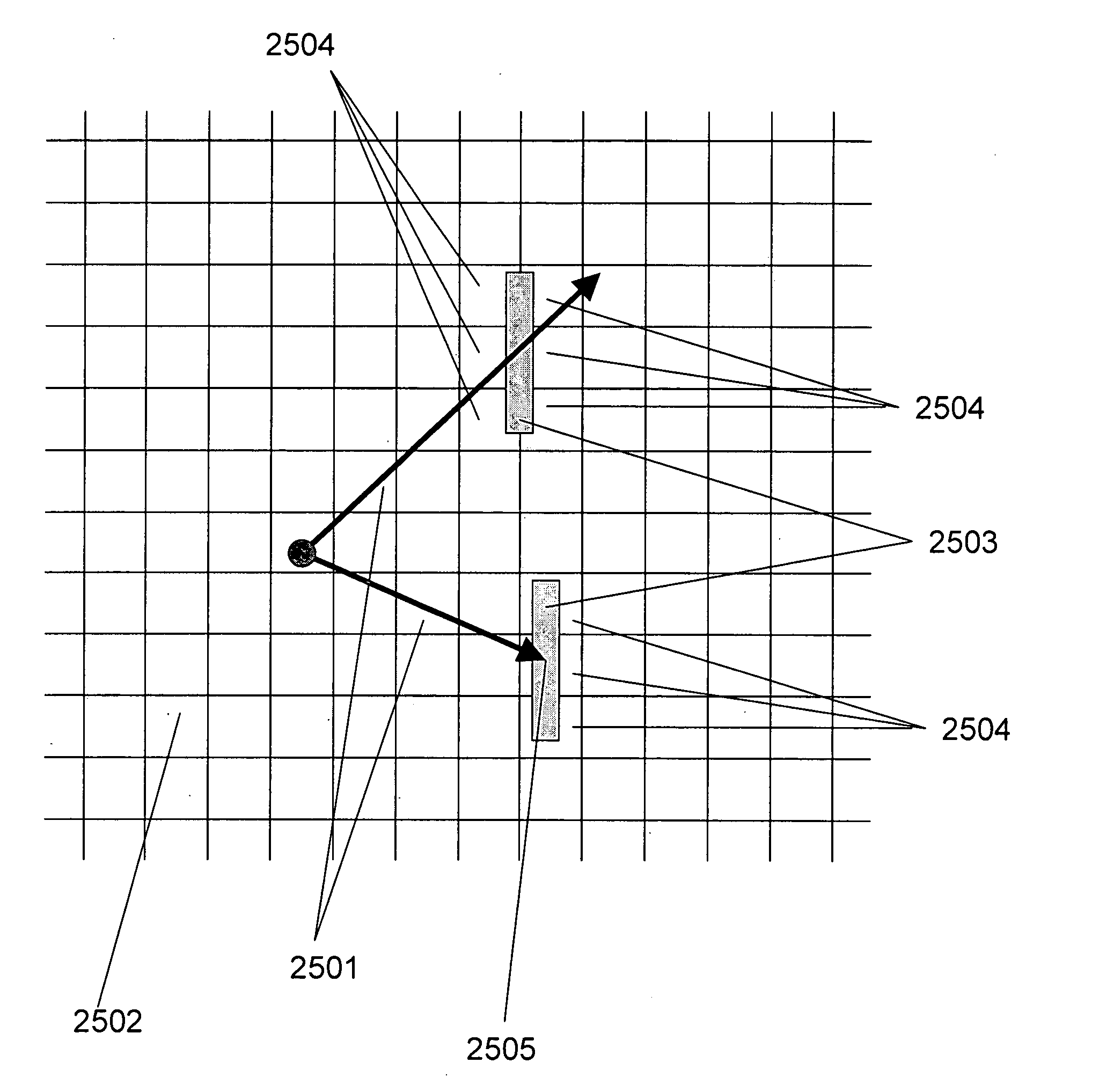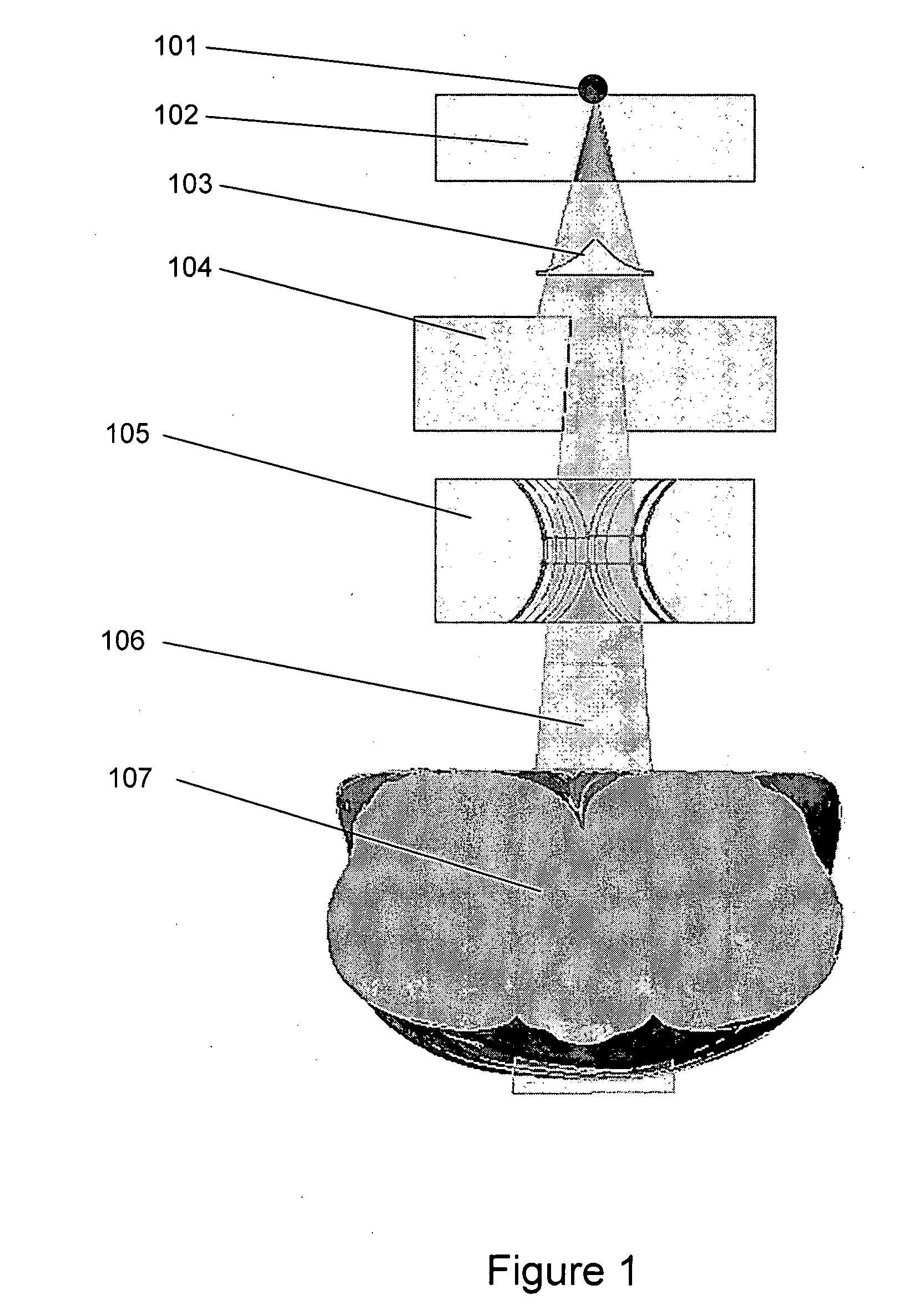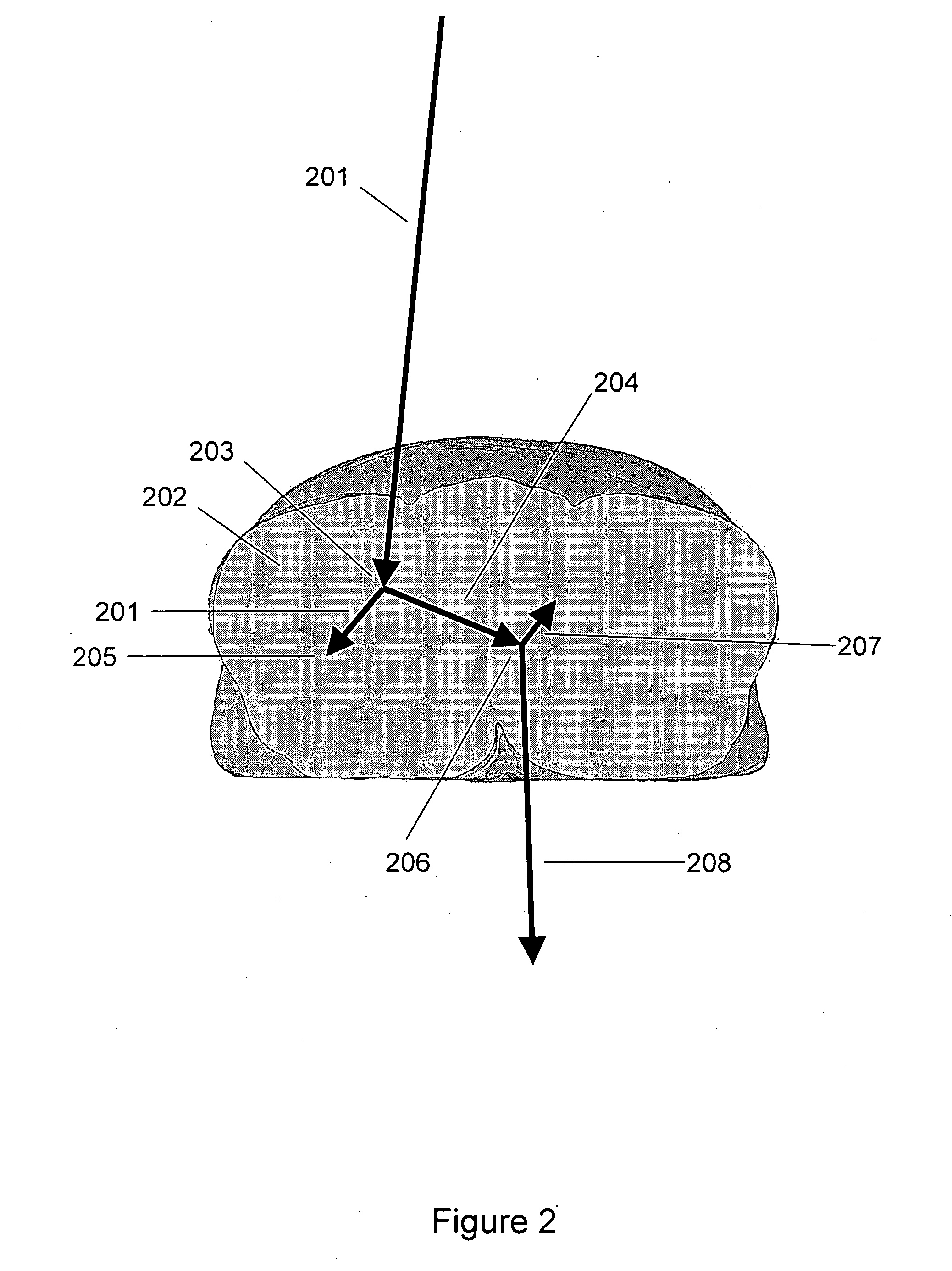Method for calculation radiation doses from acquired image data
a radiation dose and image data technology, applied in the field of radiation dose determination, can solve the problems of limiting the quality of a reconstructed image, the inability to accurately calculate the dose of radiation from the acquired image, and the inability to accurately use monte carlo methods too computationally expensive for effective clinical us
- Summary
- Abstract
- Description
- Claims
- Application Information
AI Technical Summary
Benefits of technology
Problems solved by technology
Method used
Image
Examples
Embodiment Construction
1. Dose Calculations for External Photon Beam Radiotherapy
[0056] External photon beam radiotherapy encompasses a variety of delivery techniques, including, but not limited to, 3D-CRT, IMRT, and SRS. FIG. 1 shows a photon radiotherapy beam passing through field shaping components and into an anatomical region. In external photon beam radiotherapy, a photon source 101 may be produced through a number of methods, such as an electron beam impinging on a target in a linear accelerator. This photon source may then be collimated through field-shaping devices, such as the primary collimator 102, flattening filter 103, blocks 104, and multi-leaf collimators 105 to create a beam 106 having a desired spatial distribution that is delivered to an anatomical region 107. The radiation beam may be delivered through a rotating gantry, which may move to multiple positions in the course of a single treatment. By delivering beams from multiple locations, each converging on the treatment region, the h...
PUM
 Login to View More
Login to View More Abstract
Description
Claims
Application Information
 Login to View More
Login to View More - R&D
- Intellectual Property
- Life Sciences
- Materials
- Tech Scout
- Unparalleled Data Quality
- Higher Quality Content
- 60% Fewer Hallucinations
Browse by: Latest US Patents, China's latest patents, Technical Efficacy Thesaurus, Application Domain, Technology Topic, Popular Technical Reports.
© 2025 PatSnap. All rights reserved.Legal|Privacy policy|Modern Slavery Act Transparency Statement|Sitemap|About US| Contact US: help@patsnap.com



